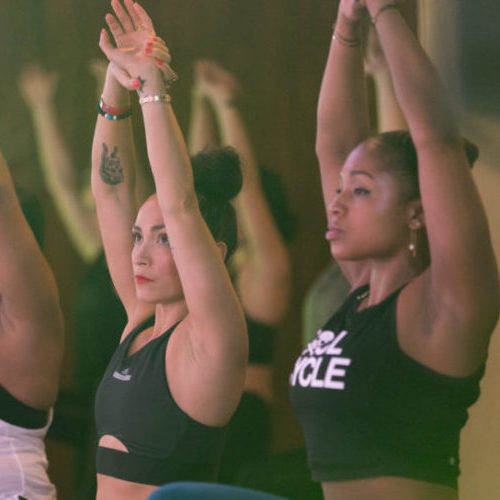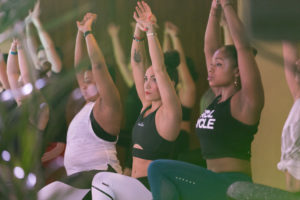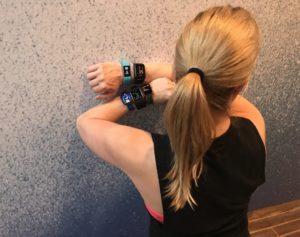
 If all the new Fitbits, Zombie running and diet-tracking apps in the world haven’t helped you lose weight, get fit, or stay healthier overall, you’re not alone. According to a series of panel discussions exploring tech’s role in the future of wellness at this years SXSW Interactive Conference in Austin — the health related devices and tech tools of yesterday just don’t cut it.
If all the new Fitbits, Zombie running and diet-tracking apps in the world haven’t helped you lose weight, get fit, or stay healthier overall, you’re not alone. According to a series of panel discussions exploring tech’s role in the future of wellness at this years SXSW Interactive Conference in Austin — the health related devices and tech tools of yesterday just don’t cut it.
The main problem? Too much data and too little actual connection to what motivates people to make lasting change. In fact, a series of studies in recent years shows that people who diet with the aid of fitness trackers might actually lose less weight than those who don’t use them.
“We really have to think about the human element. That’s where technology needs to step-up,” said Dr. Jessica Mega, Chief Medical Officer of Verily, Google’s medical moonshot arm. “We have an abundance of people who really want to improve their health, but we still don’t have [the right] tools to do it.”
The good news? According to the more than two dozen experts who took part in the Future/Fit event, the “right” tools are on the way. Here are the top three emerging tech trends to look forward to this year and beyond.
1) Social IRL
While gadgets, social media and an abundance of diet, yoga, and workout apps have flooded the market the past decade, few have done what people really need: Build community. That’s about to change.
“People are so hungry for connection, all the tech in the world is pointless if it’s not building relationships,” said author and fitness guru, Robin Arzon. “Community is what keeps people in the workout. Community is what keeps people coming back.”
Tech to Expect:
Online communities that build and nurture meaningful relationships. What will that look like? More engaging content, interaction, and ways to work out with other people, even if they’re halfway across the world. Current examples include: Peloton Cycle, the home fitness startup that builds indoor exercise bikes with built-in streaming classes, competition, and motivation; gadgets with real-time coaching like Lumo Run; and emerging apps that blend social media communities with a network of workout buddies in real life, like BBG groups.
 2) A Healthy Mind
2) A Healthy Mind
In 2017, fitness isn’t just about relying on connected screens or a new gadget to relentlessly crush calories — it’s about clearing your head too. “The most prevalent disease in America today is not cancer or heart disease,” Jeff Krasno, CEO of Wanderlust said. “It’s loneliness.”
According to a new Adidas wellness poll (Adidas was also the title sponsor of the entire Future/Fit event) nine out of every 10 people agree that when feel “right in mind,” they tend to be more active. Likewise when they’re more active, they tend to feel more balanced too.
Tech to Expect:
Meditation and mindfulness will go much more mainstream this year. Already available tech tools such as Spire, and the Breathe app will continue urging you to slow down, relax, and help combat stress and anxiety. Also, consider yoga apps like Yoga Studio and meditation apps like Calm and Headspace to amp up your inner Om.
 3) Making it Personal
3) Making it Personal
Another big topic of conversation amongst the experts was how gadgets and tech tools that treat every person the same — is a major flaw. The fix? Utilizing AI, smarter data collection and an array of privacy tools to create a “health identity” similar, to the way Facebook amasses your social identity or LinkedIn curates your work life.
“You’ll have a username and password for your health, and access to it 24/7,” said Sean Lane, former Air Force Intelligence Officer and CEO of medical identity firm CrossChx. “You don’t have one yet, but you will soon.” That means that all of the data that’s being collected through fitness gadgets, medical records, apps, smartphones, and more, could live in one place online. “It will go together in one profile that you can share with providers, therapists, family members, whomever you would like. That’s how the data’s going to look and it’s going to be awesome”
Tech to Expect:
Gadgets and tools that emphasize customization and individuality. Lane and others say before long, we’ll have workout and wellness tracking that’s catered to each and every one of us, rather than a cookie cutter model of generic human health. That could look as crazy as a medical “mood ring” of sorts that takes emotions into account, or a series of devices that turn your master bathroom into a wired wonderland for health tracking.
“There will be sensors that track your weight, biometrics, heart rate and lung capacity. Your bathroom mirror could do certain body scans. Blood pressure will be taken in your bathroom, you may even do genomics in your bathroom…everything will be connected.”
###
EXTRA: Here are some of the photos from the event, taken by Tom Bender, for Adidas Future/Fit















